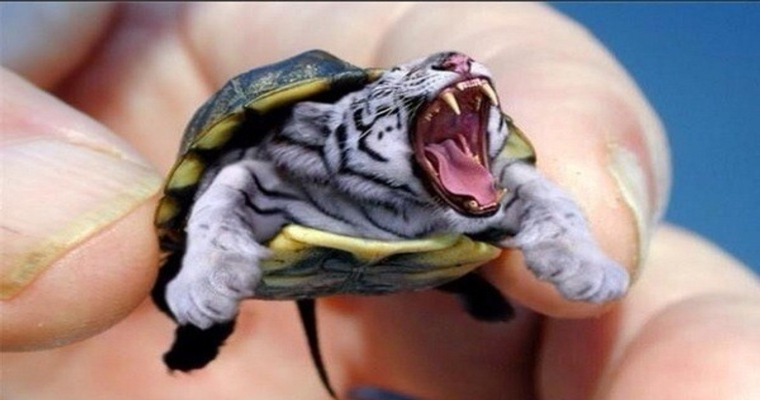Are You a Turtle or a Tiger Quiz
 Based on Imago Relationship Theory by Harville Hendrix, PhD, and Minimizing and Maximizing energy, developed by Joyce Buckner, PhD.
Based on Imago Relationship Theory by Harville Hendrix, PhD, and Minimizing and Maximizing energy, developed by Joyce Buckner, PhD.
Answer each of the 8 questions below. Choose the answer that makes sense to you. For the best results, pick the answer that matches what you do first. Each answer has a Point Value (1 or 2). Add your points and compare them to the scale at the bottom of the page, then read below about what all this means for your relationship.
“WHEN I GET UPSET, I TEND TO…”
(1) Feel tight inside and not express my emotions.
(2) Express my feelings with a lot of energy.
“WHEN I GET UPSET, I TEND TO…”
(1) Adopt an “I’ll take care of myself, I don’t need anyone” attitude.
(2) Turn to others and talk to them about what I am going through.
“WHEN I GET UPSET, I TEND TO…”
(1) Not be able to tell my partner why I’m upset.
(2) Tell my partner all about my upset.
“WHEN I GET UPSET, I TEND TO…”
(1) Have very little needs.
(2) Be very open with my feelings and believe I need others around me.
“WHEN I GET UPSET, I TEND TO…”
(1) Exclude others from my personal space.
(2) Express my needs and try to get my partner to hear and respond.
“WHEN I GET UPSET, I TEND TO…”
(1) Withhold my feelings, thoughts, and behaviors.
(2) Be excessively generous.
“WHEN I GET UPSET, I TEND TO…”
(1) Figure things out by myself.
(2) Feel responsible for making the relationship work, and getting my partner to open up and talk.
“WHEN I GET UPSET, I TEND TO…”
(1) Feel safer alone or in situations that are not intense.
(2) Get others input about what I should be doing to handle the situation.
Are you more Turtle-Like, or more Tiger-Like, or perhaps both?

What it all Means
Chances are that you can be both a Turtle and a Tiger because this really just describes a person’s Energy to withdraw or pursue in times of relationship stress. When feeling flooded and overwhelmed, Turtles tend to divert their energy inward and withdraw from their partner. And Tigers can pursue their partners with a lot of energy when they experience a loss of connection or feel abandoned or lonely. We call Turtle and Tiger behavior defenses because people try to protect themselves when they feel like they are being either attacked or abandoned. Since we have the capacity to minimize our energy inward like a Turtle or maximize our energy outward like a Tiger, why then do we tend to choose one defense over the other?
The answer to this question goes back in time to the day you were born. When you were born, you had two basic needs: Safety and Connection. It is rare that a baby is born with the same level of need for both safety and connection. Most of us come out of the womb with a slightly higher need for one over the other. The baby born with a higher need for Safety has internal radar that scans the environment for danger. If the baby experiences aggression or intrusiveness from caregivers (or others), he or she will retreat into the “turtle shell” for protection. And the baby who is born with a higher need for Connection will be painfully aware when there is no one to connect to. He or she will get big with “tiger energy” and even throw a temper tantrum if necessary, just to get someone to come and ease the pain of abandonment.
Are men typically Turtles, and are women typically Tigers? Certainly the environment can reward or punish certain behaviors that have been stereotypically associated with men and women, and it may be tempting to view men as turtles and women as tigers based on society’s expectation; however, the bigger factor seems to be the greater need at birth for either Safety or Connection. Therefore, turtle and tiger behavior can present in either gender. And nature has a way of pairing us with the opposite energy person to create balance in the relationship. Turtles and Tigers fall in love. The sooner each partner understands the unique needs of the other, the sooner the relationship will feel both safe and connected.
For the relationship to “grow-up” and mature, the turtle and tiger have to step into new behaviors, meaning, they each need to learn how to do the opposite energy so the turtle will feel safe and the tiger will feel connected. Therefore, the turtle needs to approach the tiger during times of stress, as opposed to withdrawing, even when the tiger is in a high-energy state. This new behavior will soothe the tiger, reducing the pain of abandonment and the tiger will naturally soften. And the tiger needs to stop the big energy attacks that come in the form of criticism, judgment, or blame so the turtle will feel safe and enjoy spending time in the relationship space.
